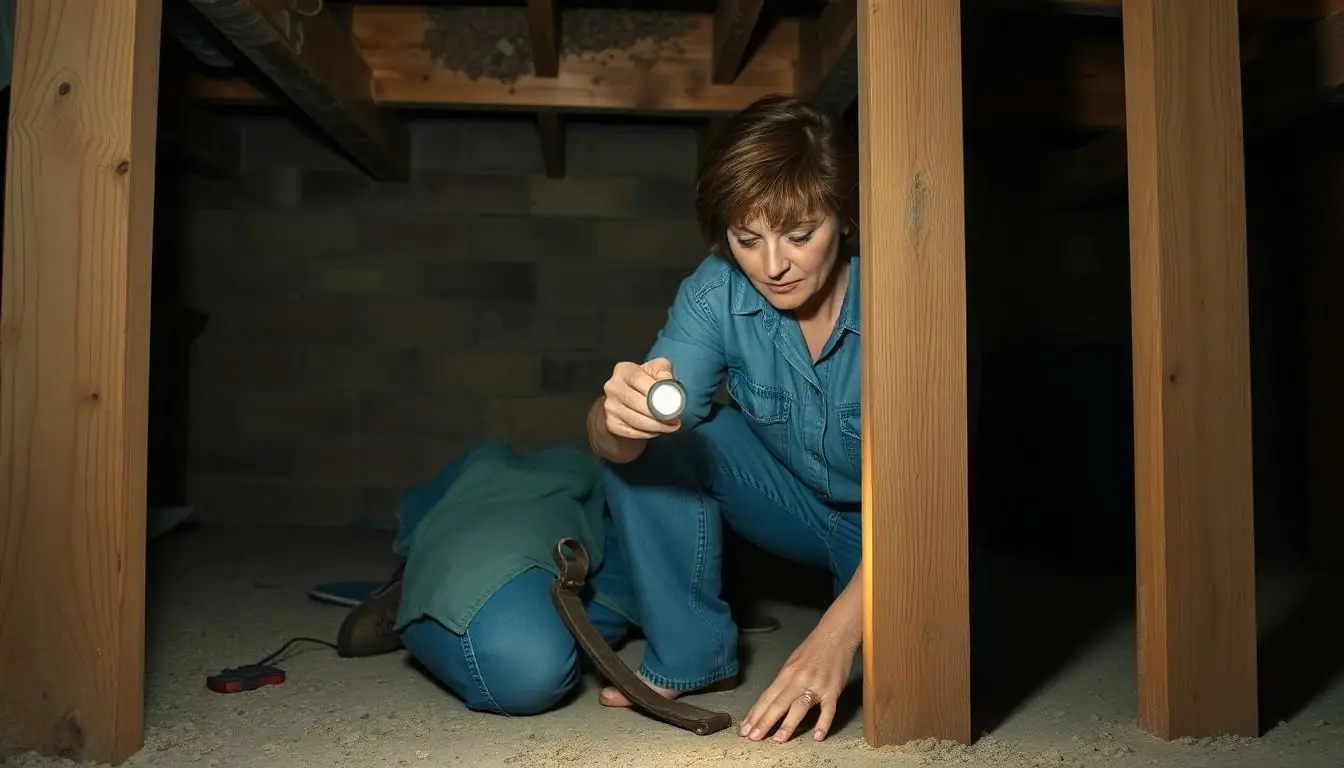When it comes to homeownership, few things are more terrifying than discovering a colony of termites has turned your cozy abode into their all-you-can-eat buffet. But before you start a DIY extermination mission with a can of spray and a shoe, it’s crucial to know whether your home insurance has your back.
Table of Contents
ToggleUnderstanding Home Insurance
Home insurance serves as a protective measure for homeowners against various risks. Knowing the specifics of a home insurance policy is crucial, especially regarding termite damage.
Types of Coverage
Home insurance typically includes liability, dwelling, and personal property coverage. Dwelling coverage protects the home’s structure from damages caused by perils such as fire or theft. Personal property coverage safeguards belongings like furniture and electronics against similar risks. Liability coverage addresses injuries suffered on the property. Although some policies offer limited pest damage coverage, termite damage is not commonly included unless specifically outlined.
Common Exclusions
Many homeowners overlook exclusions in their policy documents. Termite damage represents one prominent exclusion in most home insurance plans. Various factors contribute to this exclusion, including the nature of infestations and the homeowner’s duties in maintenance. Neglecting to address a pest issue can worsen the damage over time. Additional exclusions often include damage from earthquakes and floods, emphasizing the need for separate policies to cover those events. Understanding these exclusions helps homeowners make informed decisions about their coverage.
Termite Damage Overview

Understanding termite damage helps homeowners recognize the importance of effective pest control. This damage includes structural issues caused by termite tunneling and feeding habits.
What Constitutes Termite Damage?
Termite damage primarily involves destruction of wood and other cellulose materials. Wood beams, floorboards, and door frames often suffer the most significant harm. Infestations lead to hollowed-out wood, making structures weak and unstable. Signs include mud tubes, discarded wings, and frass, which indicate activity. Homeowners must identify these signs early to mitigate damage.
The Impact of Termite Infestations
Termite infestations can lead to extensive property damage, impacting both safety and finances. As infestations progress, repair costs can escalate significantly, often exceeding thousands of dollars. Additionally, homes may lose value due to potential structural issues. Some homeowners face frustration navigating insurance claims when coverage excludes termite damage. Awareness of the implications can help homeowners take preventive measures before infestations arise.
Does Home Insurance Cover Termite Damage?
Home insurance policies often exclude termite damage. Understanding specific coverage details helps homeowners make informed decisions.
Standard Home Insurance Policies
Standard home insurance policies commonly provide coverage for various risks. However, they typically exclude damage caused by termites. Homeowners often overlook this exclusion, leading to unexpected financial burdens. Structural issues arise from termites, which can be extensive and costly to repair. Homeowners should review their policy details to confirm what’s covered and what isn’t. It’s vital to communicate directly with insurance agents when uncertain about coverage. Failing to recognize stock exclusions may result in denied claims.
Additional Coverage Options
Homeowners may pursue additional coverage options to safeguard against termite damage. Some insurance companies offer riders or endorsements specifically for pest-related damage. Such coverage addresses concerns over infestations and related repairs. Proactively adding this clause can mitigate future financial losses. Consulting a knowledgeable agent aids in understanding available enhancements. Homeowners benefit from knowing their options to customize their insurance policies. Keeping records of pest inspections may help when filing claims related to property damage.
Steps to Take If You Discover Termite Damage
Discovering termite damage necessitates immediate action to prevent further destruction. Homeowners must take specific steps to address the issue effectively.
Documenting the Damage
Begin by taking clear photographs of the affected areas. Documenting damages provides visual proof for any future claims or assessments. Note the extent of the damage and any visible signs of infestation. Create a detailed report that includes timestamps and descriptions of the damage. Collecting this information helps in negotiations with insurance providers. Maintain copies of any related correspondence to ensure complete transparency.
Contacting Your Insurance Provider
Reach out to your insurance provider promptly after discovering the damage. Explain the situation clearly, highlighting your concerns about coverage specifics. Be prepared to provide the documentation created earlier, as this strengthens your case. Ask about the claims process, and clarify any questions regarding possible exclusions in your policy. Keeping open lines of communication ensures you remain informed and can make necessary decisions based on the answers received.
Homeowners need to be proactive when it comes to understanding their insurance coverage regarding termite damage. With standard policies often excluding this type of damage, it’s crucial to review policy details and consult with insurance agents.
Taking preventive measures can save homeowners from significant financial burdens in the future. Documenting any signs of infestation and maintaining open communication with insurance providers can strengthen claims. By being informed and prepared, homeowners can better navigate the complexities of termite damage and protect their investments.




